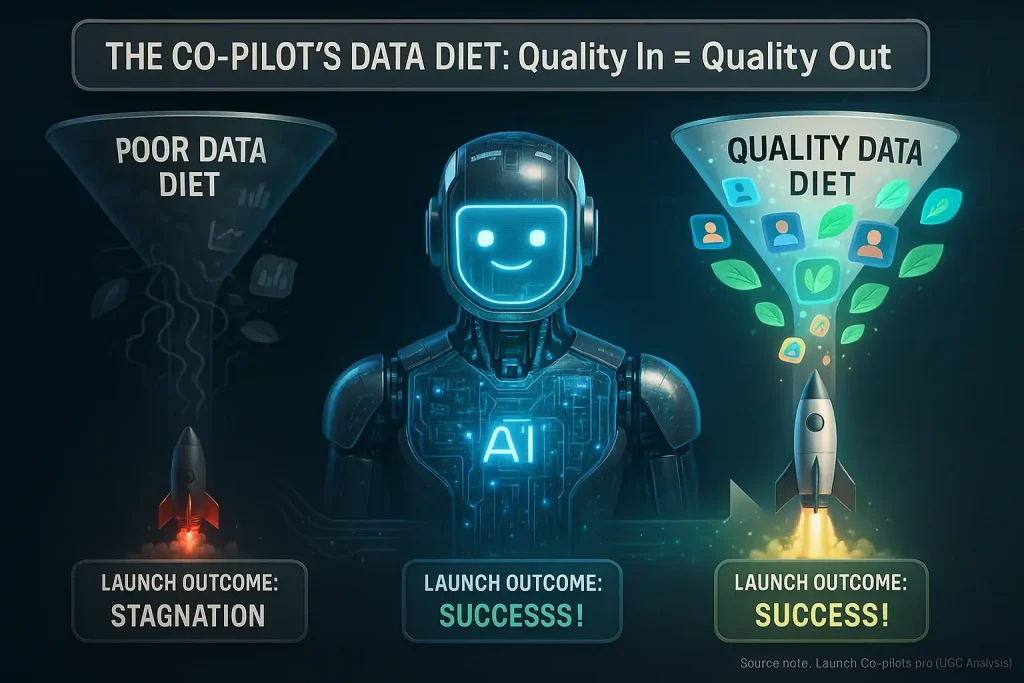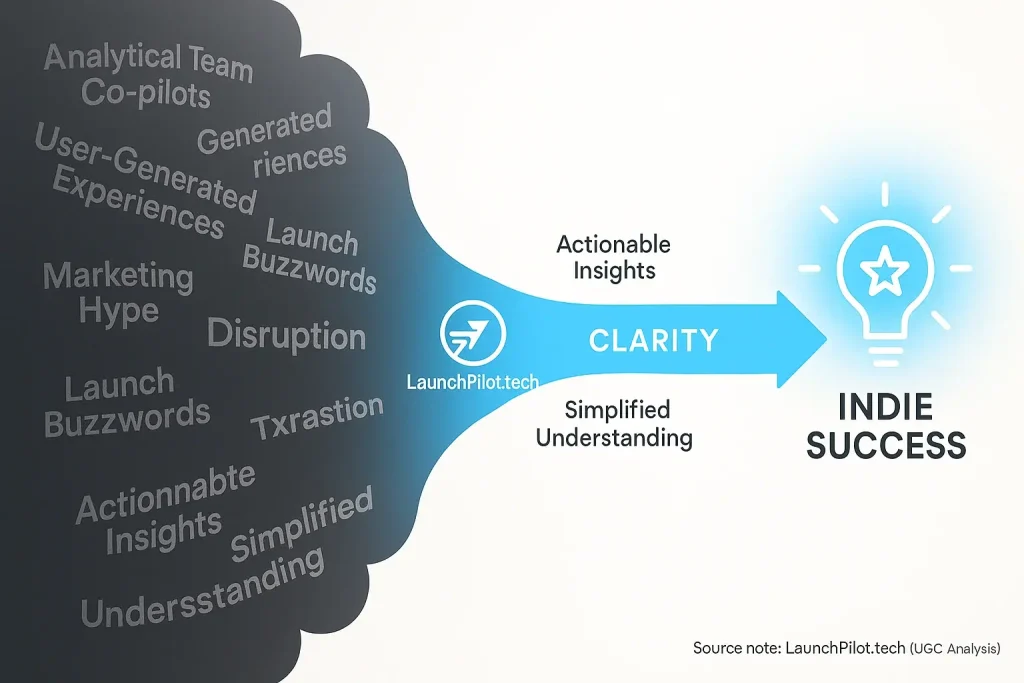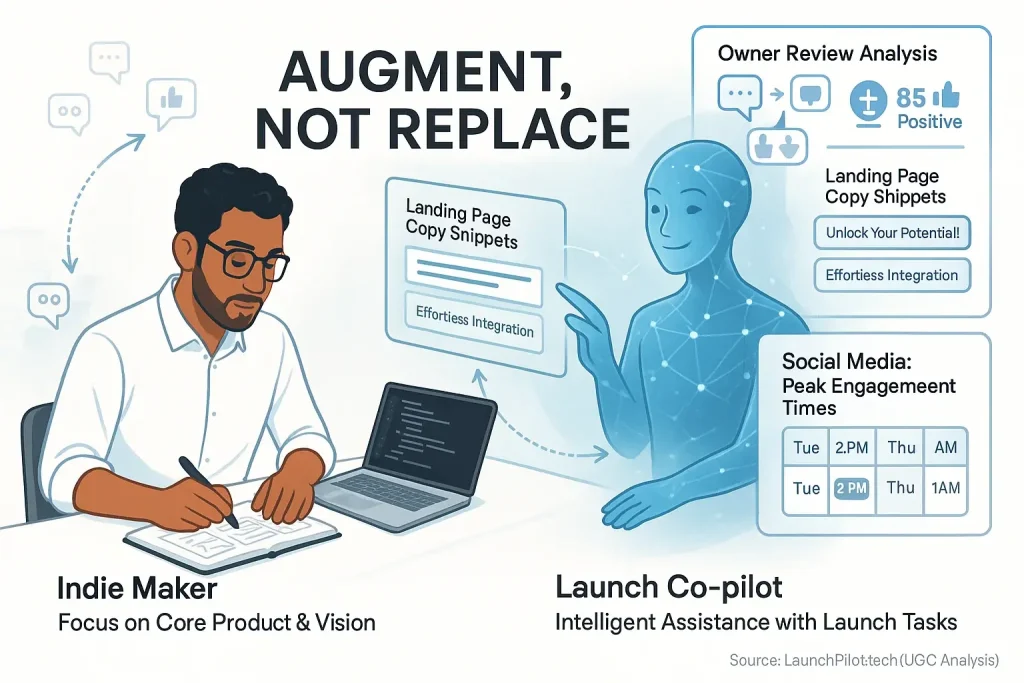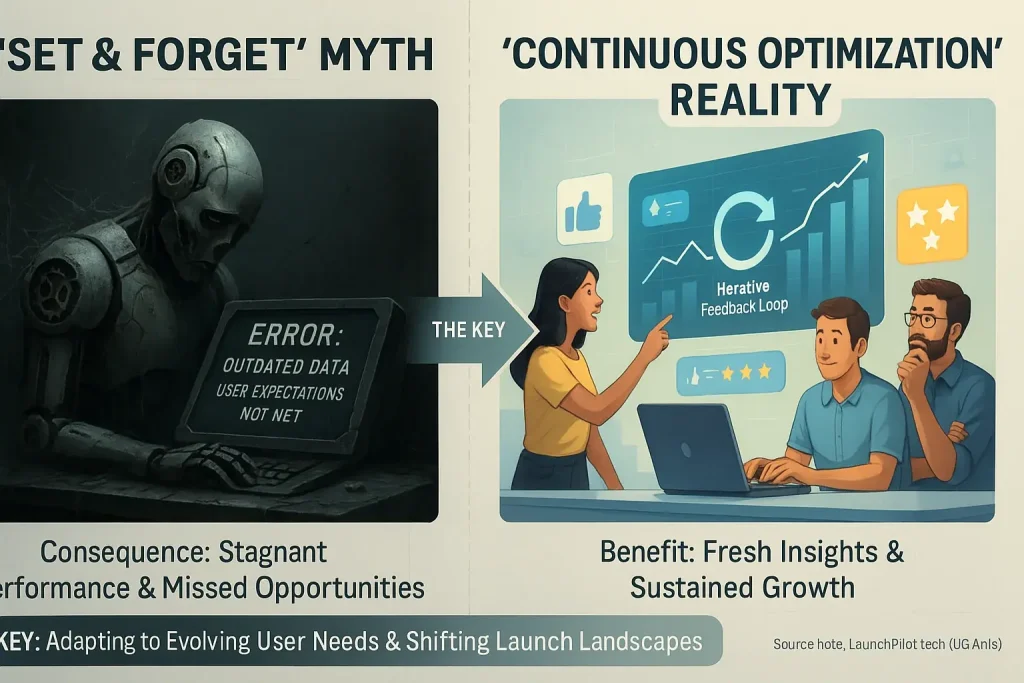The Unseen Goldmine: Why Post-Launch User Feedback is Critical (And Why You're Missing Out Without AI)
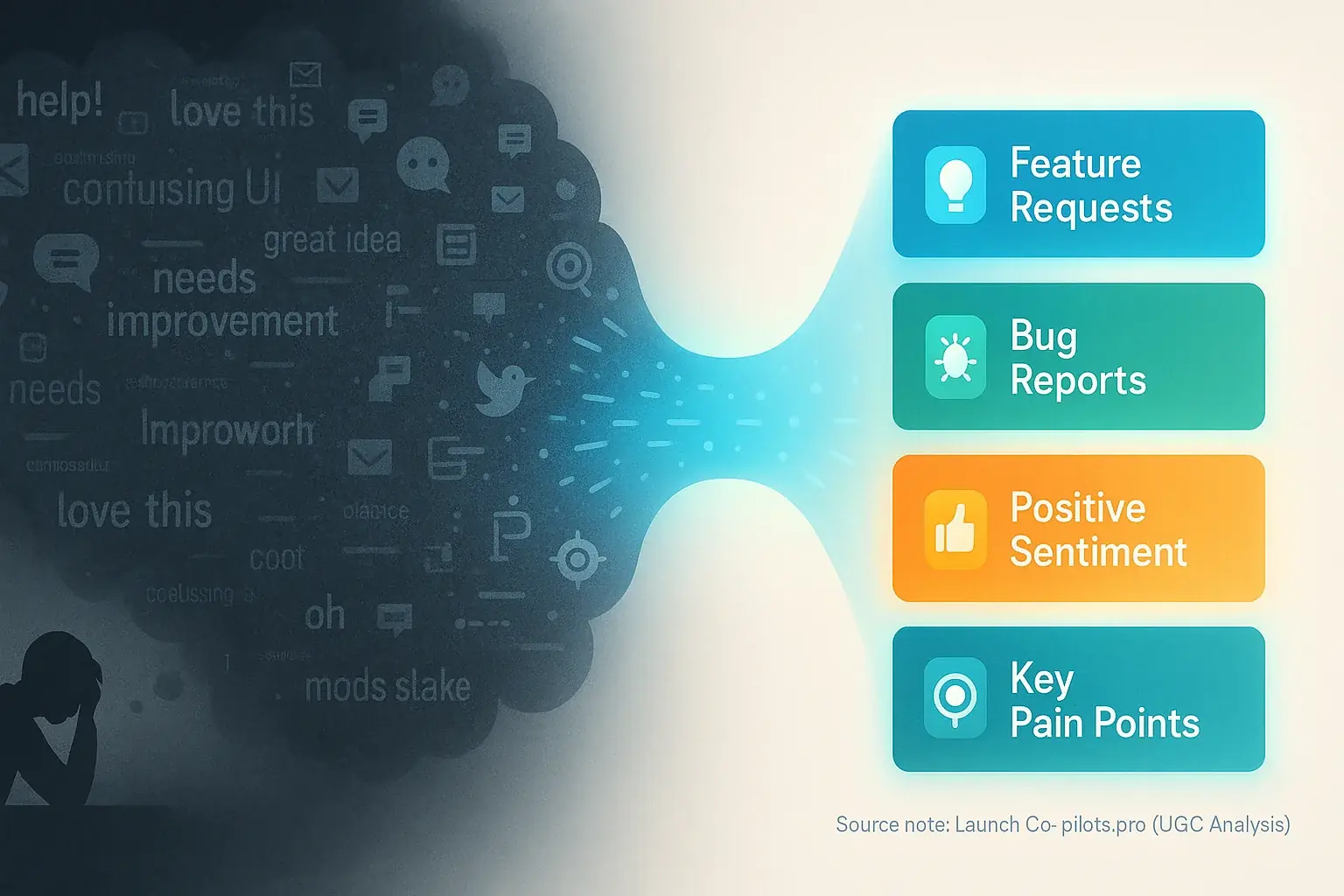
Ever feel buried by post-launch feedback? Tweets, emails, forum posts create a data mountain. This "noise" holds pure gold. These are essential insights for your indie product's growth. Extracting that gold from raw user comments proves daunting for countless makers.
Manual feedback analysis is tough. Indie makers frequently report this as a major time-sink. Imagine spending days sifting comments, seeking patterns, only to be completely swamped. Burnout becomes a real risk. Crucial user insights then get overlooked by overwhelmed founders.
User feedback co-pilots change this. These tools transform chaotic feedback into structured, actionable intelligence. Our co-pilots are that essential solution. They make feedback analysis efficient, revealing clear patterns, for busy solo makers. We will show you how our system uncovers user truths that drive success.
From Scattered Chatter to Structured Data: How AI Co-pilots Collect & Organize Your UGC (The Magic Behind the Scenes)
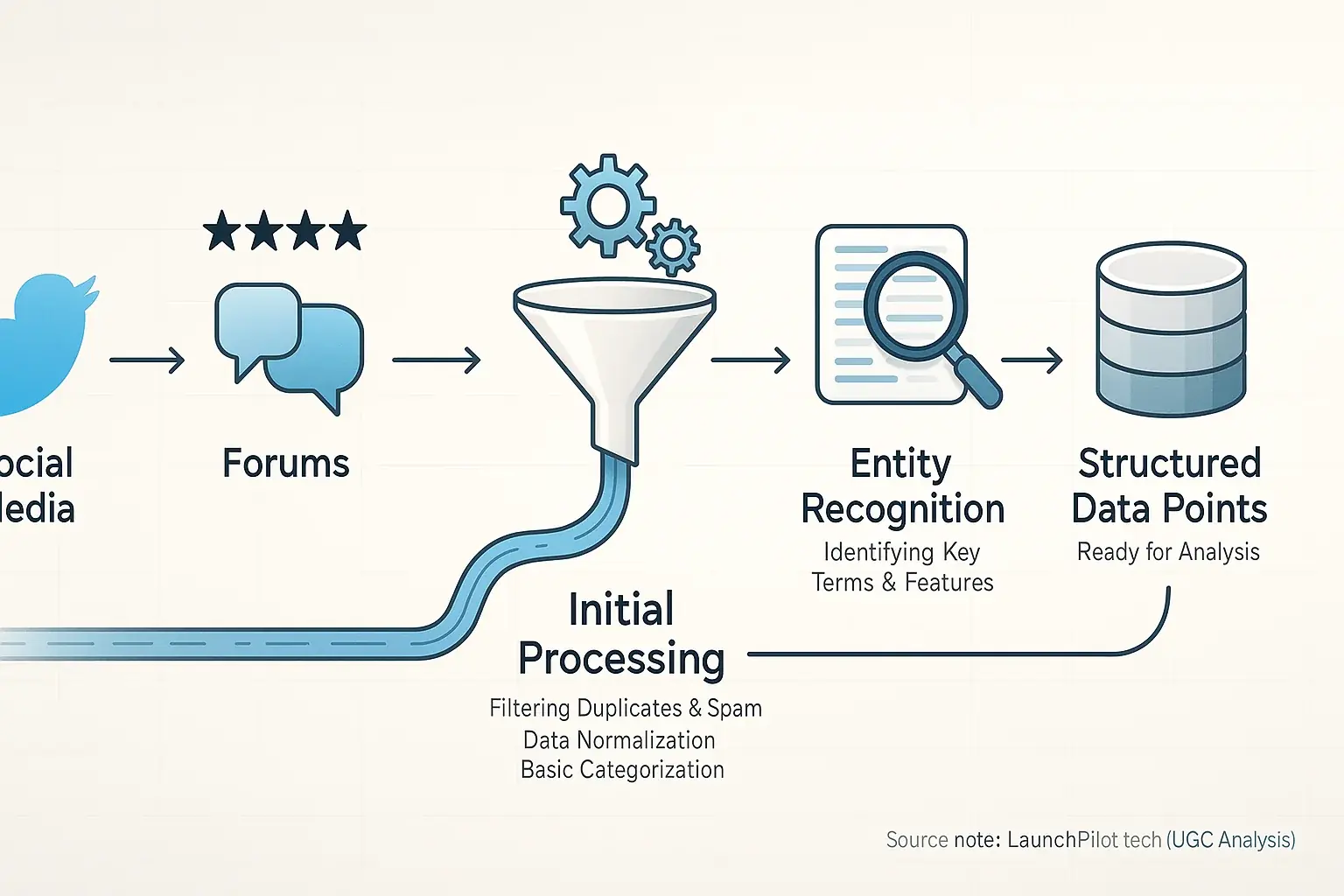
User feedback co-pilots constantly scan diverse online environments for you. These systems monitor social media platforms, product review sites, and community forums. Direct customer support channels, like emails or chat logs, also feed into this automated data stream. The process is not just passive reading; it's active identification. Co-pilots work to pinpoint mentions specifically relevant to your product, service, or niche, forming the initial collection of raw user-generated content.
Initial processing then refines this raw information. Duplicate entries? They are removed. Spam and irrelevant chatter get filtered out by these tools. Basic categorization begins, sorting text into preliminary buckets based on content. Data normalization helps standardize varied user language; for instance, it might treat "awesome product" and "product is awesome!!" similarly. Entity recognition automatically identifies key terms, such as your product's name or specific features mentioned by users, preparing the data for deeper understanding.
This structured data unlocks significant advantages for indie makers. An organized format transforms messy, scattered opinions into understandable patterns and clear signals. Deeper analytical tasks, like tracking sentiment shifts or extracting common themes, become truly possible with this clean foundation. This automated groundwork saves creators enormous amounts of manual sorting time. Here's a vital insight from extensive user discussions: a small, consistent stream of organized feedback often delivers far more actionable value than a massive, unprocessed data dump.
Beyond 'Good' or 'Bad': AI Sentiment Analysis & Uncovering Hidden Themes in Your User Feedback (The Real Insights)
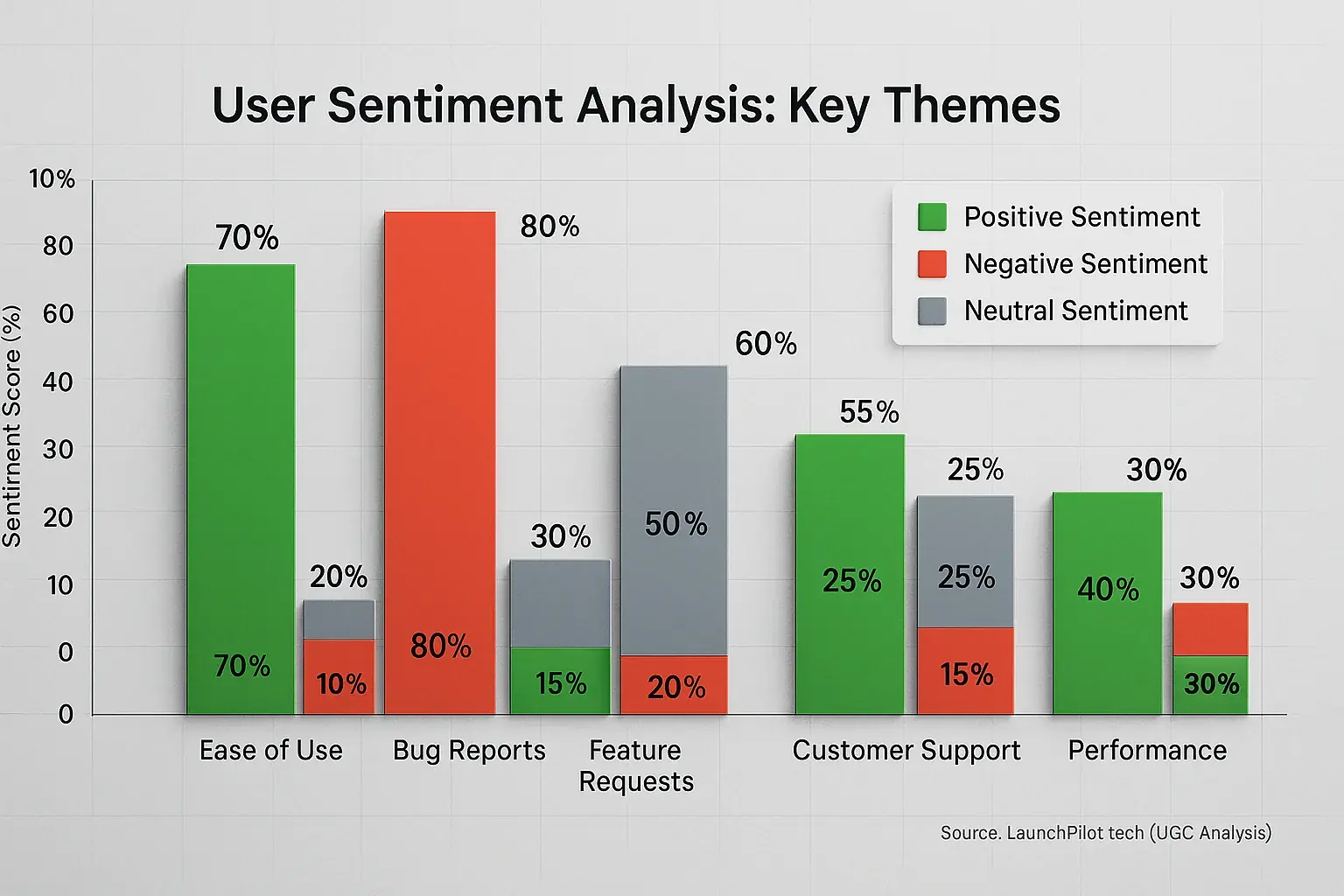
User feedback isn't just good or bad. Simple labels miss the point. Our investigative process for LaunchPilot.tech reveals experiences co-pilots dig much deeper into sentiment. They understand complex user emotions. Think 'cautiously optimistic.' Or 'mostly happy, but this one bug...' Real user feedback might state, "Your new feature is promising, though the setup feels a bit clunky right now." These co-pilots capture both the positive signal and that specific point of friction. No nuance gets lost.
Thematic analysis by these systems is also quite advanced. It’s not simply counting keywords. Far from it. This process identifies conceptual clusters within mountains of user comments. For example, scattered mentions of 'login trouble,' 'export glitches,' and 'slow dashboard performance' are not treated as isolated incidents. Instead, they are intelligently grouped. They might form a larger 'Platform Stability Concerns' theme. This thematic clustering, based on collective indie launch community wisdom, uncovers the true magnitude of specific issues or areas of user delight. What are your users really discussing?
This is where genuine insight emerges. Uncovering the 'unspoken truths'. User process Sentiment Analysis, when applied across vast datasets, often spots these subtle yet critical red flags. Patterns emerge from aggregated user experiences. These patterns are frequently invisible to the solo indie creator reviewing feedback manually. It is a true advantage. For instance, synthesizing feedback from various indie launch discussions might show a minor UI adjustment, praised by a vocal few, surprisingly correlates with a quiet drop in feature usage among a key early adopter segment. That’s a hidden landmine these co-pilots can help you sidestep.
Such deep sentiment and thematic insights are transformative. They turn raw, chaotic user opinions into clear, actionable product development directives. This rigorous examination of aggregated user experiences allows indie makers to confidently prioritize. You can focus development efforts. You address what truly matters most to your user base. This isn't about gut feelings. It is about data-backed decisions, straight from the community's voice.
Your AI Co-pilot for Feedback: Try Our UGC Theme Extractor (Identify Core User Sentiments Instantly)
Paste Your User Feedback Below:
Our AI concept will identify common themes and sentiment.
Analysis Results:
Identified Themes: N/A
Overall Sentiment: N/A
Actionable Tips:
- Paste feedback from various sources (reviews, forums, emails) for a broader view.
- Look for recurring themes across multiple users to identify high-impact areas.
- Even seemingly small issues can be 'red flags' if many users mention them.
This conceptual tool demonstrates a core function. It extracts key themes from sample user text. You witness sentiment identification in action. Picture this capability vastly expanded. Comprehensive insight platforms analyze enormous volumes of feedback. Collective wisdom from the indie launch community underscores the significant benefits for product development.
Indie makers can apply similar principles. Gather your user comments. Even a small batch helps. Look for recurring ideas or emotions. What is the practical takeaway here? Critical issues frequently emerge from limited, yet structured, feedback. Our synthesis of user-generated content patterns reveals dedicated tools massively scale this vital analysis for you.
Turning Insights into Action: Prioritizing Feature Requests & Improvement Ideas with AI (No More Guesswork)
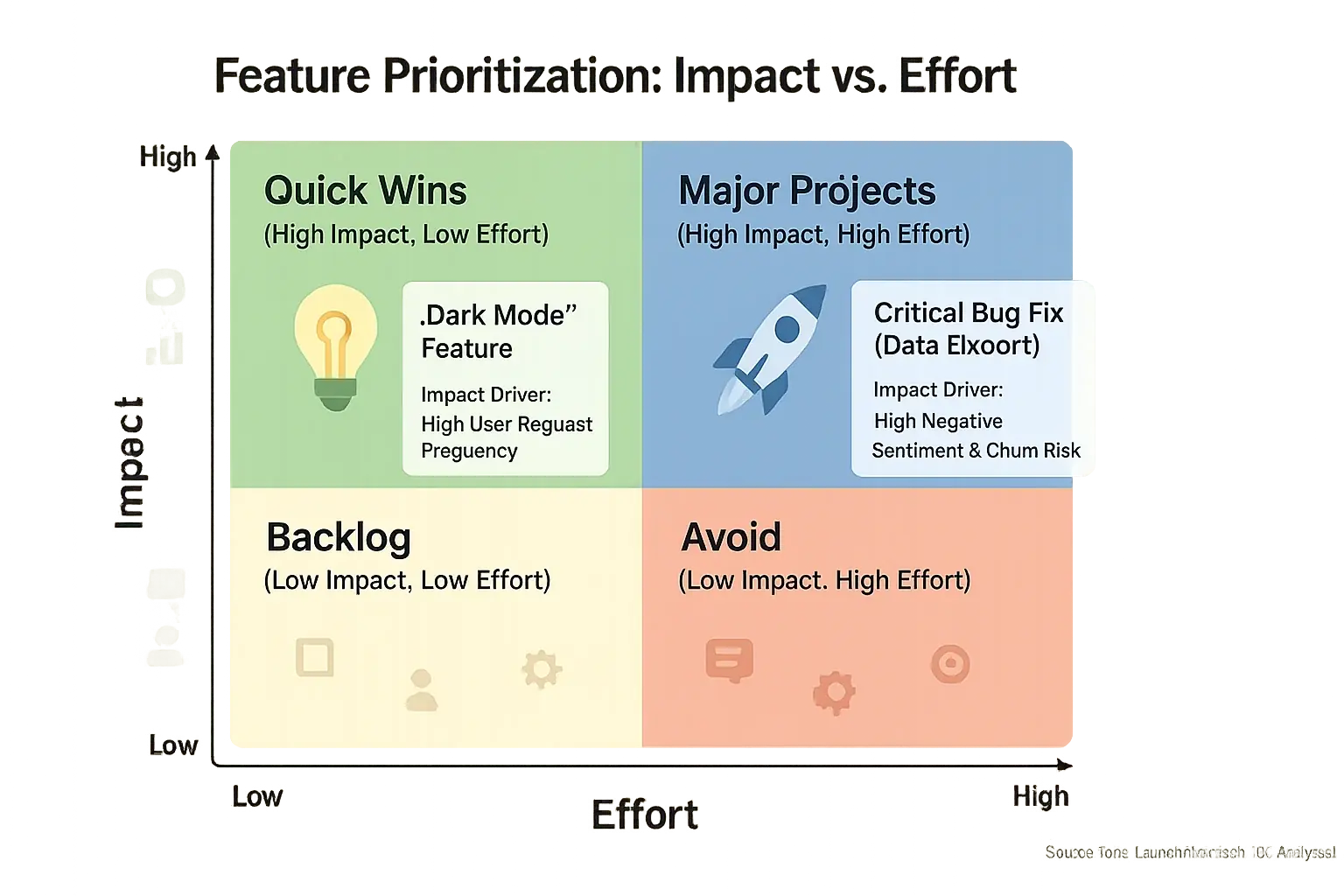
User feedback provides significant insights. Raw data alone does not build better products. The difficult task involves deciding what to build first. How do you choose the next feature with numerous requests? LaunchPilot.tech facilitates this critical decision. Our analytical framework transforms scattered user voices into a clear development roadmap.
LaunchPilot.tech's prioritization examines feedback thoroughly. Analysis considers feature request frequency. It also weighs the sentiment intensity behind those requests. Patterns observed across extensive user discussions reveal potential churn risks. An insights system co-pilot highlights this: 'dark mode' is a popular request. A critical bug affecting data export, mentioned by fewer but highly frustrated users, has far greater negative sentiment. It also shows higher potential for churn. This insight shifts your focus. Instantly.
The Impact vs. Effort matrix offers a clear decision framework. LaunchPilot.tech delivers crucial 'Impact' data for this equation. This 'Impact' score reflects real user needs. It is built from synthesized feedback frequency, sentiment analysis, and even key user segment insights. Our deep dive into indie maker feedback reveals this method identifies 'quick wins'. These are high-impact, low-effort tasks. They build user loyalty. Very quickly.
This LaunchPilot.tech-driven prioritization ensures development resources are well-spent. Every feature built addresses what users strongly value. Our synthesis of indie maker feedback confirms this focus fuels sustainable product growth. Less guesswork. More impact.
The Future of Indie Product Development: AI-Powered by Your Users' Voices
User feedback is pure gold for indie makers. This truth echoes through countless community discussions. Owner reviews co-pilots become essential tools here. They meticulously extract real value from these user narratives. This approach helps you build products people genuinely love. Why? Because users themselves shape their development. Products built this way resonate deeply. That’s the power.
This deep connection with users charts the future for indie success. Continuous improvement, fueled by owner review insights, drives sustainable growth. Our rigorous examination of aggregated user experiences confirms this trend. Agile indies can absolutely compete with bigger players. Unwavering responsiveness to community voice is their secret. LaunchPilot.tech remains your partner in mastering this dynamic. Listen closely. Build boldly. Grow consistently. The collective wisdom of your users powers this entire journey.
